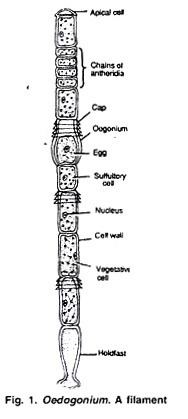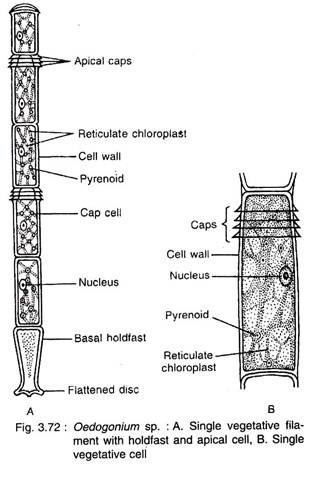Kingdom Plantae Scientific name Oedogonium Order Oedogoniales | Higher classification Oedogoniaceae Rank Genus | |
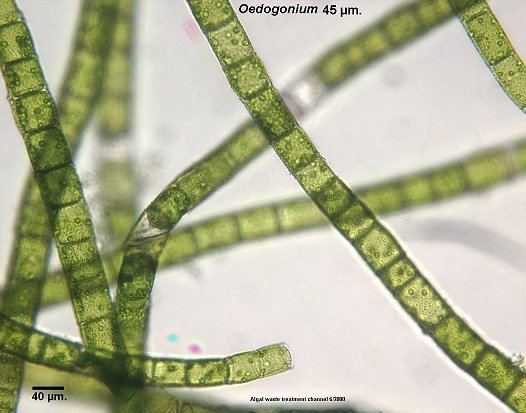 | ||
Similar Green algae, Ulothrix, Water silk, Oedogoniales, Water net | ||
Oedogonium is a genus of filamentous green algae, with unbranched filaments that are one cell thick. Oedogonium can be free-floating, though it is usually attached to aquatic plants by a holdfast. It appears greenish and inhabits calm, fresh water.
Contents
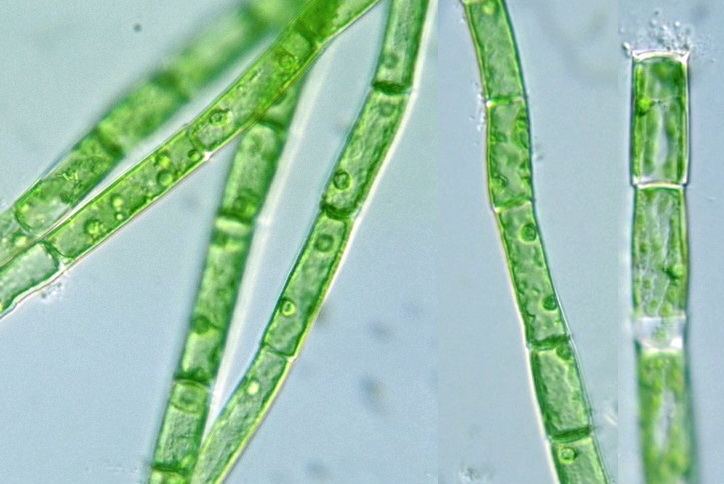
Asexual reproduction

Oedogonium can reproduce asexually by fragmentation of the filaments, through some other types of non-motile spores, and also through zoospores, which have many flagella. These develop in a zoosporangium cell, one zoospore per zoosporangium. After settling and losing its flagella, a zoospore grows into a filament.
Sexual reproduction
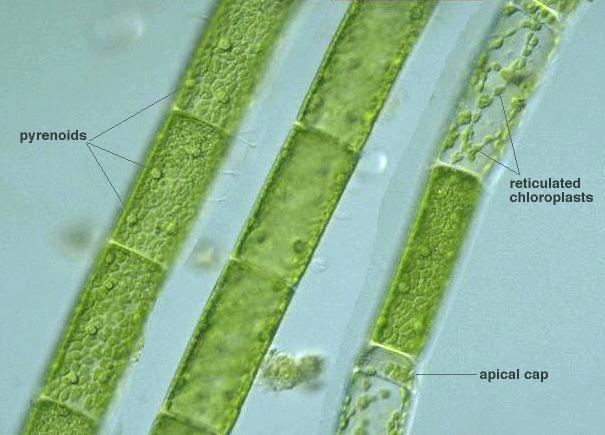
The life cycle of Oedogonium is haplontic, i.e., meiosis is zygotic. Antheridia which produce sperm, and oogonia which produce an egg, release the sperm and egg. The egg and sperm then fuse and form a zygote which is diploid (2n). The zygote then produces the filamentous green alga which is haploid (1n).
Species
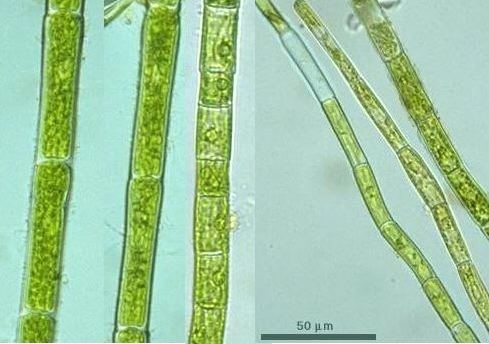
Species of Oedogonium are divided into two major groups on the basis of the distribution of the sex organs:
